
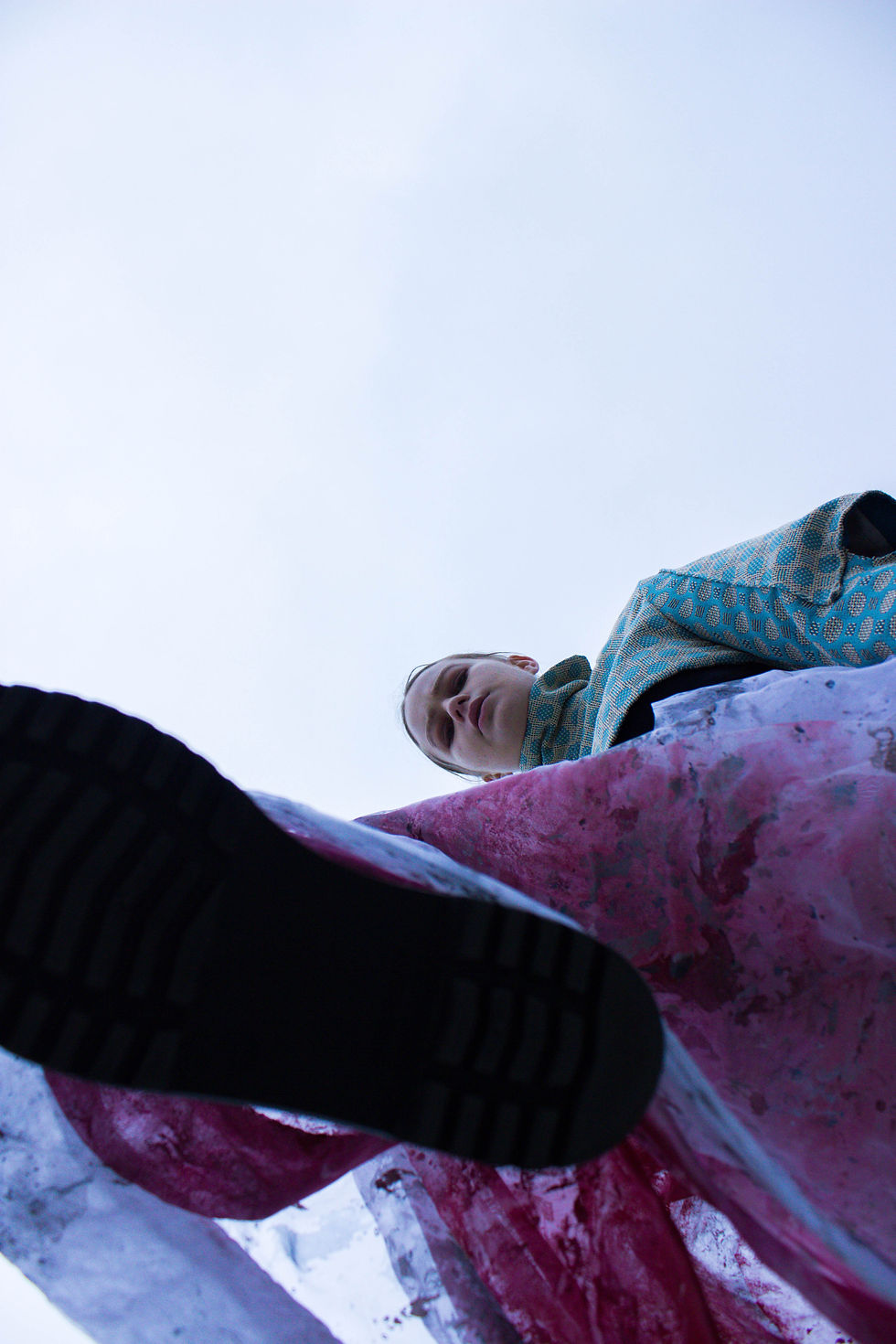
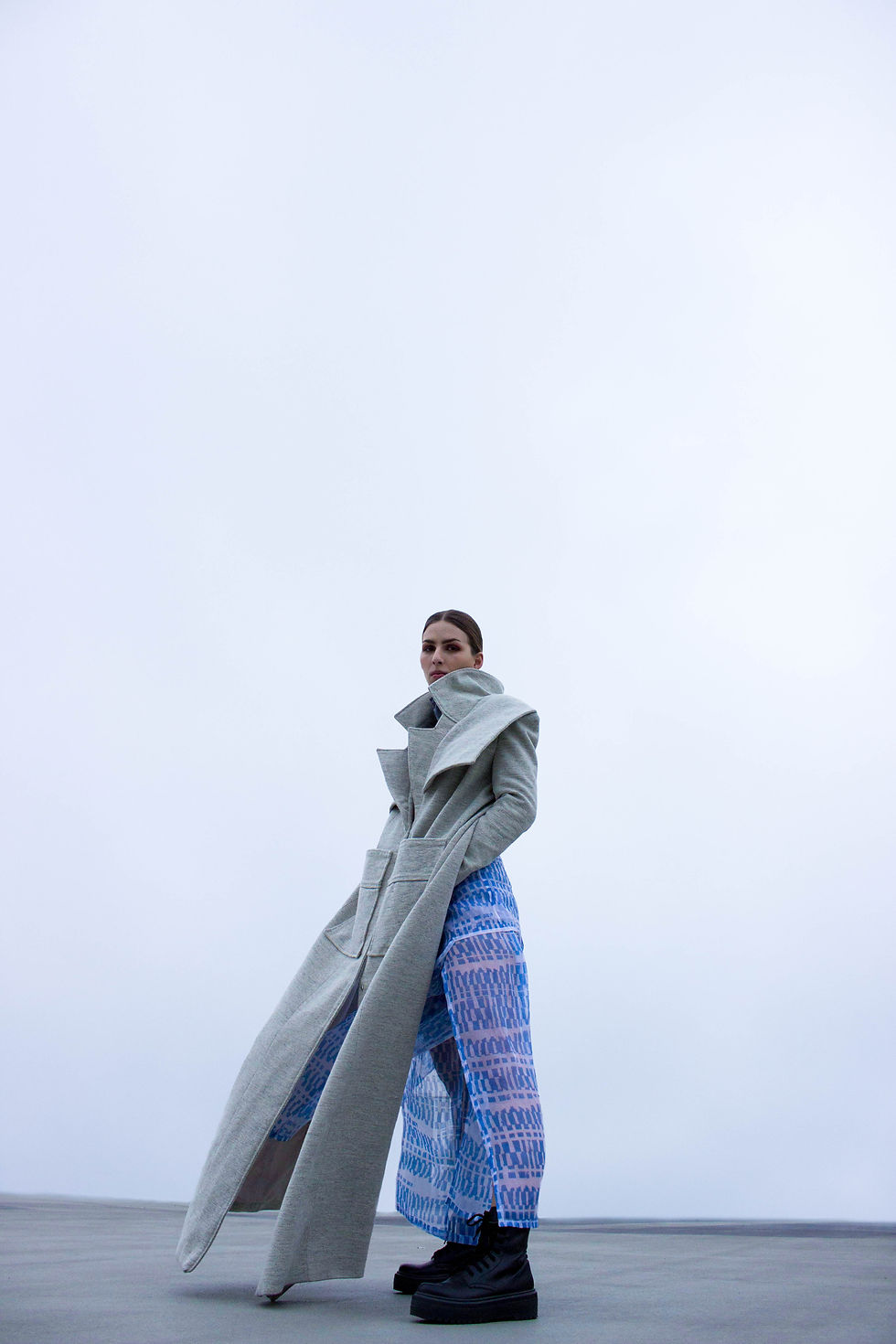

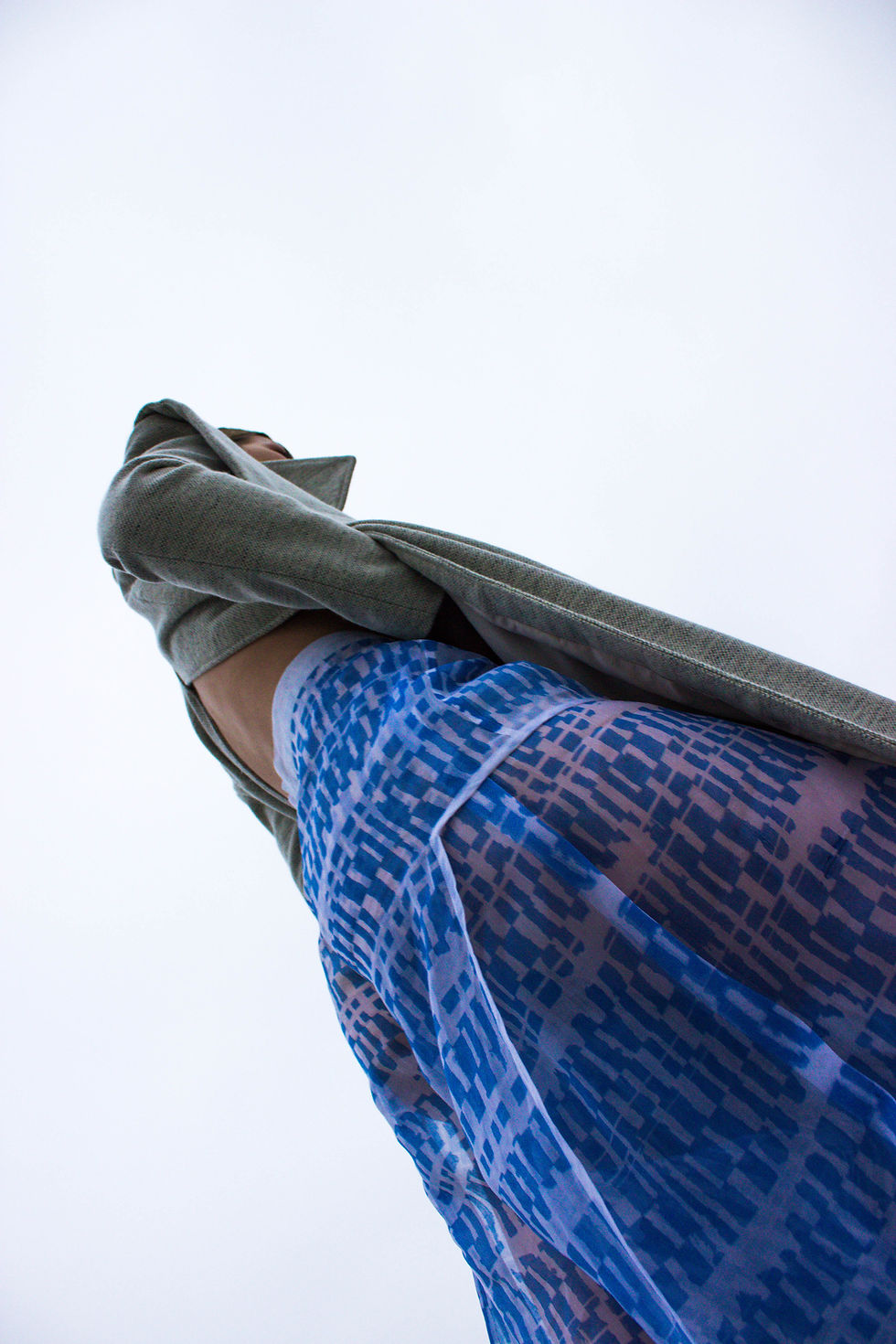
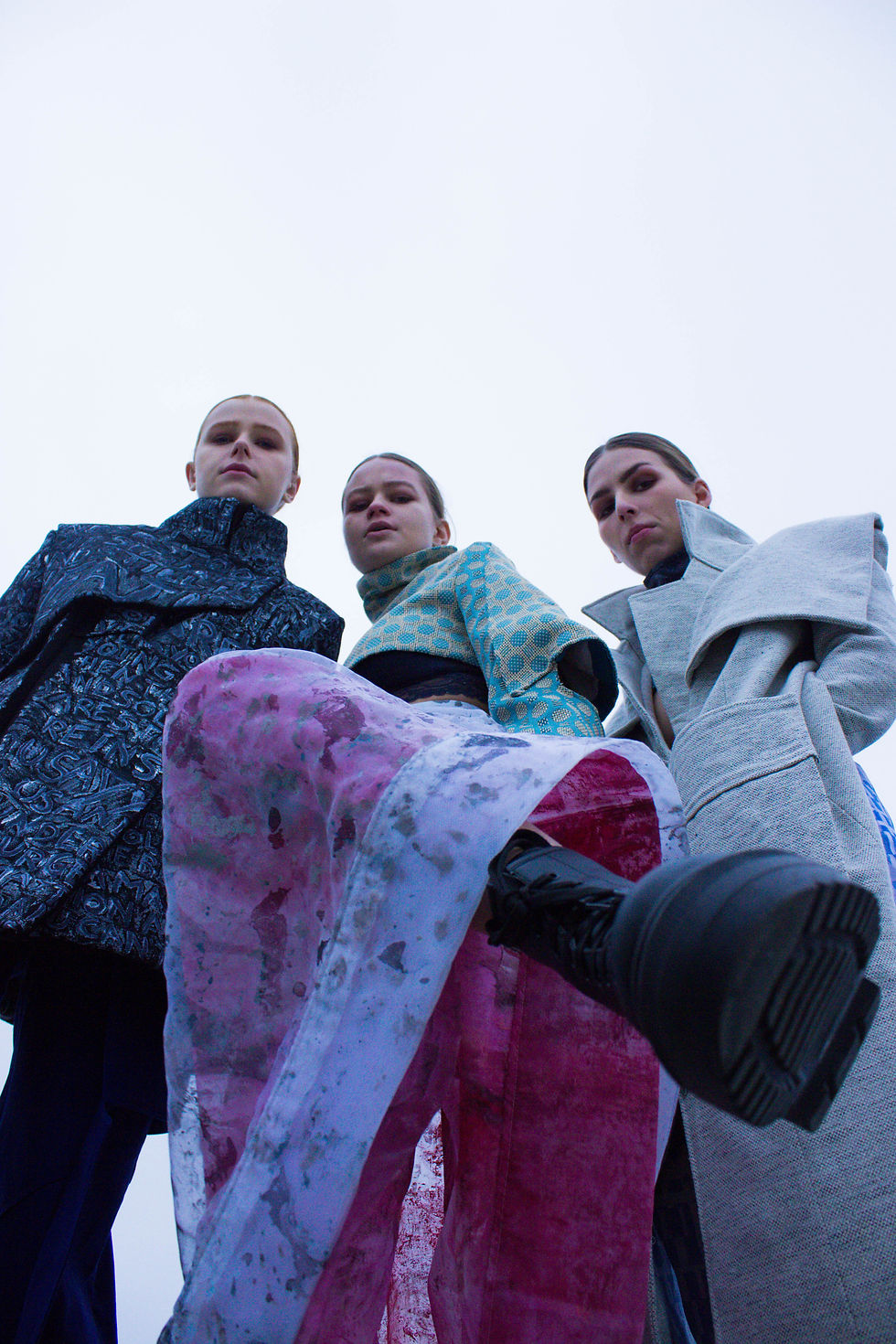
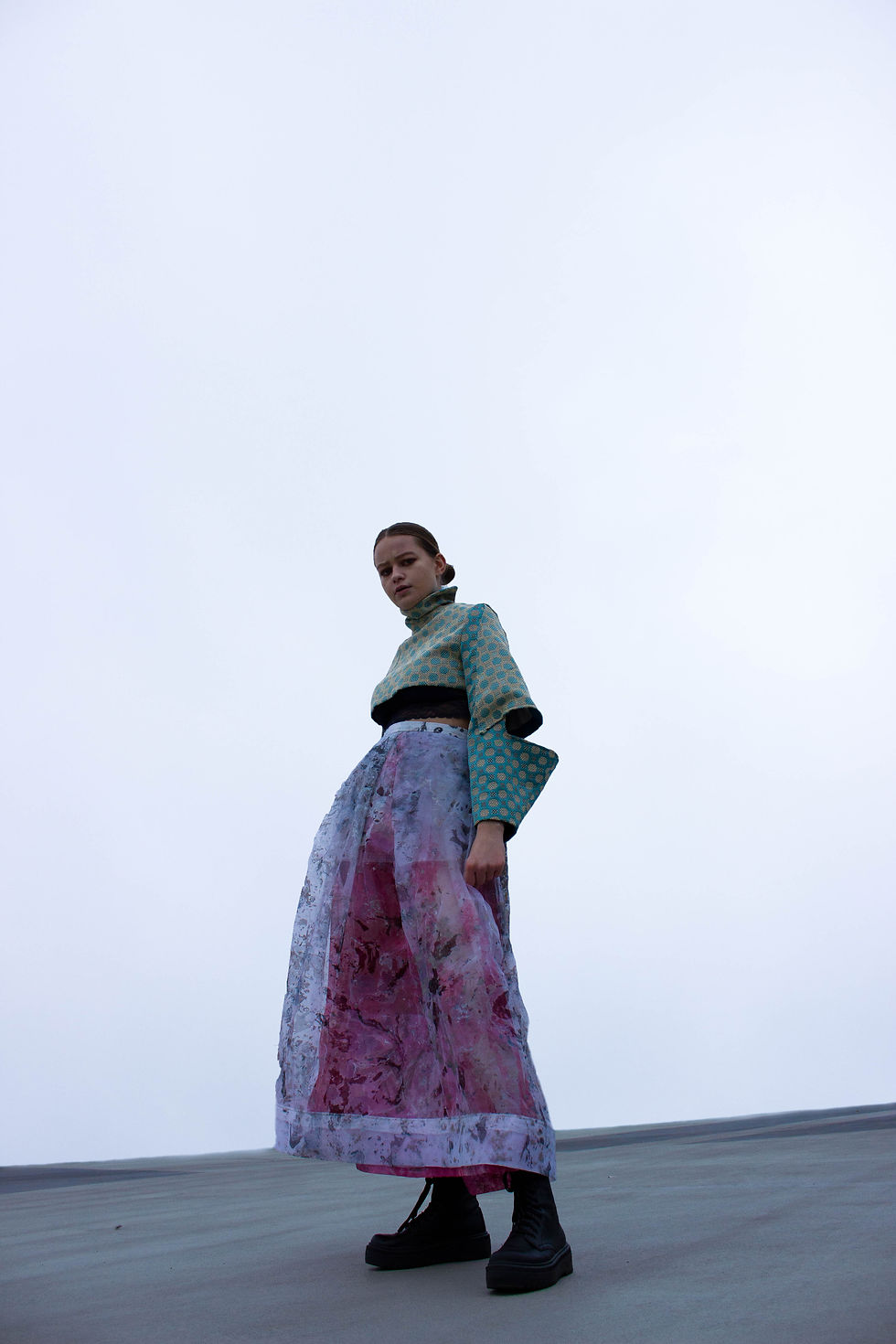
HOW DARE YOU?!
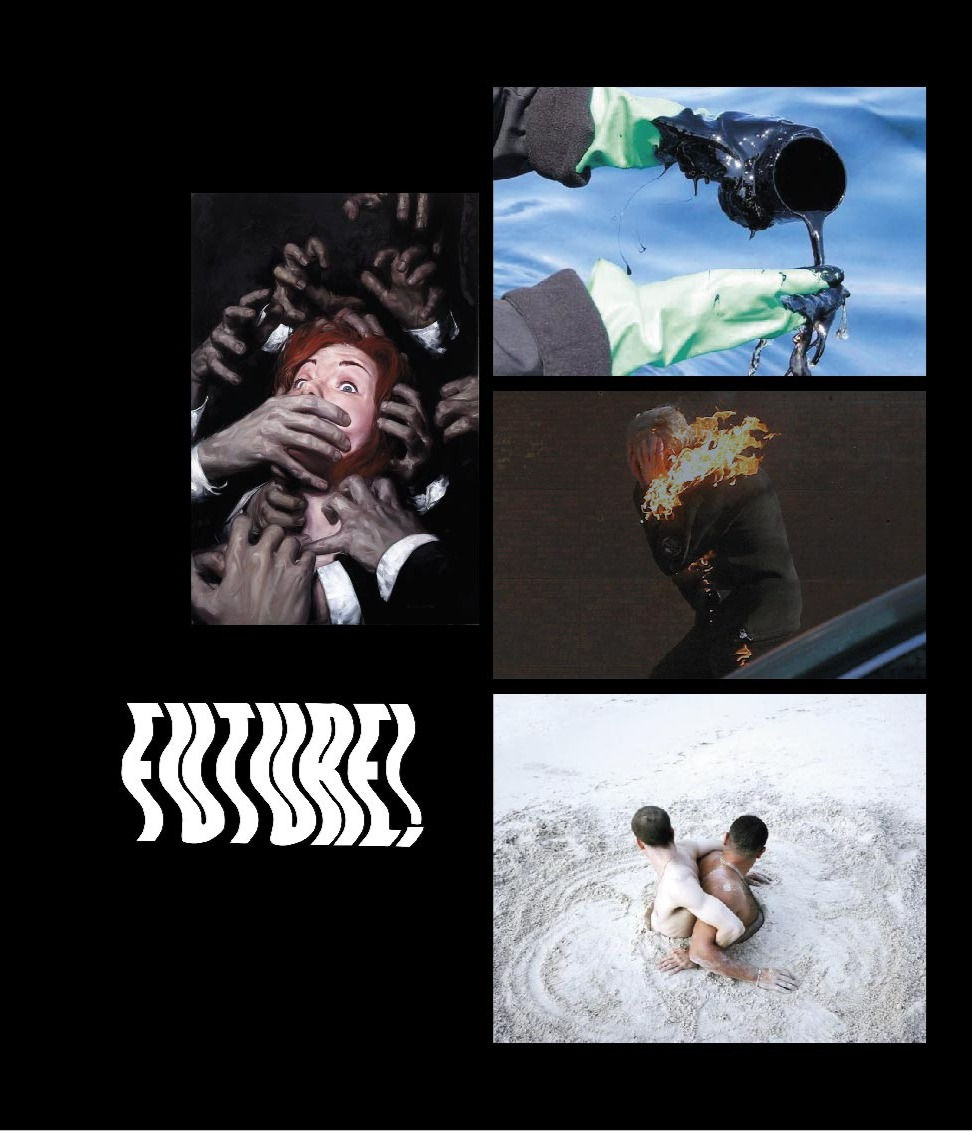
We need more focus on the climate crisis, and the consequences our unsustainable living has on the world. The fashion industry plays a big part in the climate crisis, being the second most polluting industry in the world. At this point, not enough is happening to improve the situation. I want to warn people about our future. There are only a couple of years left before climate change and its consequences are irreversible. With this collection the goal is to wake people up. I want to evoke a feeling of urgency and frustration, an emotion that is needed for change.
A big problem in the fashion industry is overproduction. A huge amount of garments are being produced, but only 20% is sold. Everything else ends up in landfill or will be burned. All sources used for overproduction that damage the earth are going to waste.
As a counteraction. This collection is not designed to be produced on a larger scale. Each garment is unique and requires a lot of handwork. To realize this, the garment is stitched and the print is added later by hand techniques.
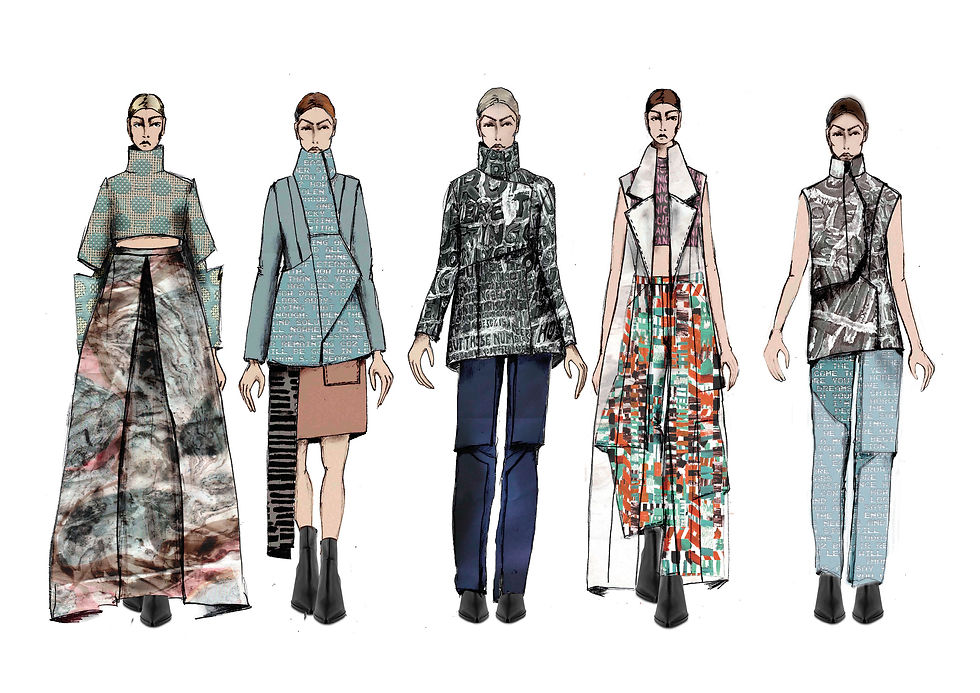
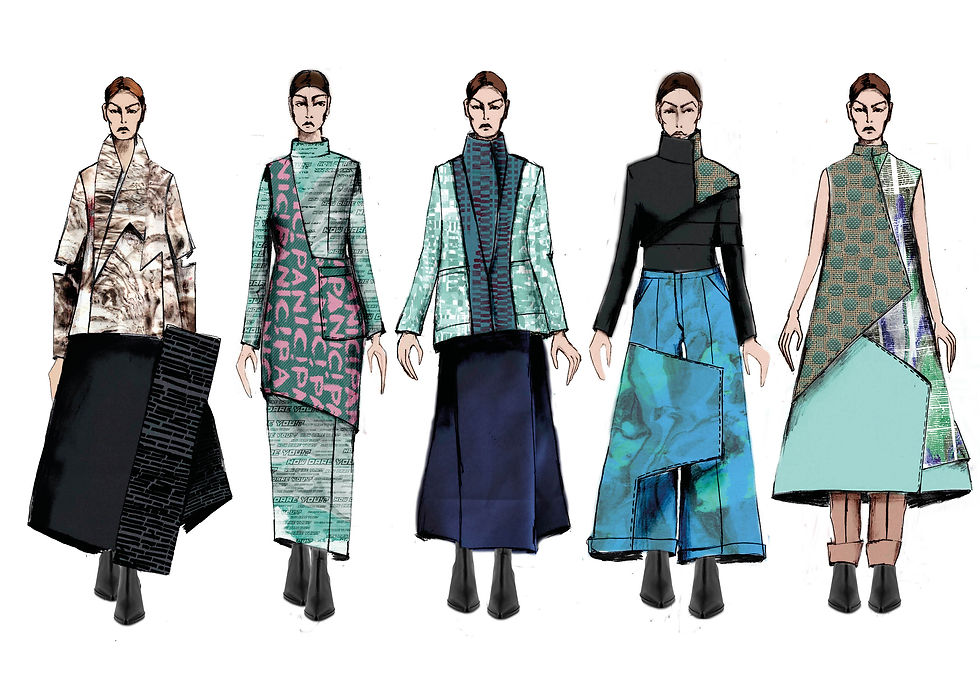



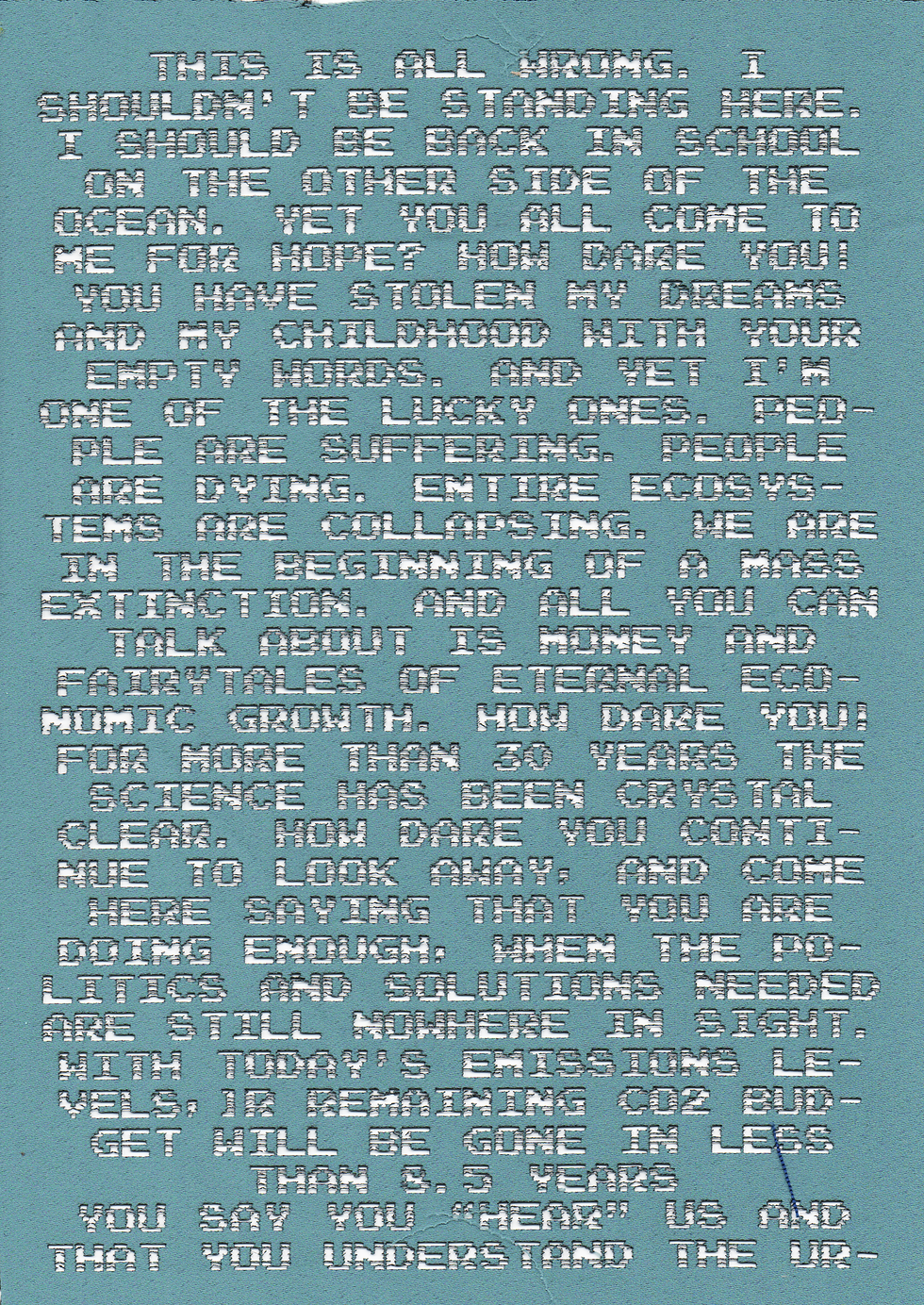
The prints tell the story of the collection. Organized in three print groups, each group tells a part of the story. The first group is inspired by data graphics. An important way of convincing an audience on the urgency of a topic is to show the information in a clear visual way. Data graphics help. They show an interesting compositions of colors and lines but only this does not communicate the needed frustration and urgency. The stripes and lines need texture and a feeling of impulsivity. The shapes of data graphics are recreated with stripes made with a paintbrush. These brush strokes are then digitalized and organized. The symbolism of the data graphics is a way of showing information that is not literally. The message in the print is read in the right context.
The second print group plays with oil spills. A natural disaster can both be beautiful and dangerous. The most beautiful one can be the oil spills in the ocean. The oil, leaking into the sea, mixes with the water and beautiful colors arise in the ocean, while damaging the biodiversity at the same time. By experimenting how toxic paint moves in water and the translation to textile. Every design is unique, because no water movement can be replicated.
The third and last print group is based on text. For over 30 years, scientists know about the climate crisis. They predicted what would happen, but nobody listened. Proof for their predictions is written in multiple scientific articles. Words are necessary for communication. A story is preserved by writing it down. That’s why this print group is based on text. Text in fashion is often very loud, words that seem to scream in bright colors. When someone shoutds at you, you tend not to listen. This is the same with visual text. When it’s too much and too loud, people might ignore the message. That is why I experiment with text as texture. Creating a visual texture by using ton-sur-ton colors in a print, and smaller text instead of big words. A viewer is drawn to the texture and colors of the print, and once they get closer they read the text and get a message they might ignore when it is shouted at them.